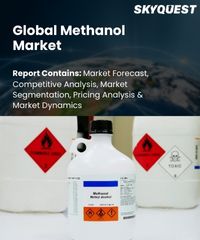
Report ID: SQMIG10G2022

Report ID:
SQMIG10G2022 |
Region:
Global |
Published Date: July, 2024
Pages:
157
|
Tables:
65 |
Figures:
75
The Asia-Pacific region is the largest and fastest-growing market for methanol globally. The region accounted for the largest methanol market share in 2023 and is expected to continue to do so in the coming years. China is the largest consumer of methanol in the world and accounts for a significant share of the demand in the region. The methanol market growth in the Asia-Pacific region is driven by increasing demand from end-use industries such as construction, automotive, and electronics. Methanol is used in a range of applications in these industries, including formaldehyde production for resins and adhesives, as a fuel additive, and in the production of plastics and synthetic fibers. The increasing use of methanol as a transportation fuel in countries such as China and India is also driving the demand for methanol in the region. Methanol can be blended with gasoline to create a methanol-gasoline blend, which can be used in vehicles that are designed to run on gasoline. In addition, vehicles that are specifically designed to run on methanol can be used. Methanol-powered vehicles are currently being used in some countries in the region. Several key players in the methanol market have a significant presence in the Asia-Pacific region. The presence of these companies is driving competition and innovation in the region, which is expected to further drive the growth of the methanol market in Asia-Pacific in the coming years.
North America was a significant region for the methanol market, with the United States being the largest producer and consumer of methanol in the region. In North America, methanol is primarily used as a feedstock for the production of formaldehyde, acetic acid, and other chemicals, as well as for blending in gasoline to improve its octane rating. Methanol is also used in the production of biodiesel, as a solvent, and as an antifreeze agent. the US methanol producers primarily concentrate on the Gulf Coast region, where large-scale production facilities take advantage of the region's abundant natural gas resources. The United States is also a significant importer of methanol, with most imports coming from Trinidad and Tobago, Canada, and Venezuela. In recent years, there has been growing interest in the use of methanol as a transportation fuel in North America. Methanol can be used as a fuel in modified gasoline engines or converted to dimethyl ether (DME) for use in diesel engines. This has led to the development of several pilot projects and initiatives to explore the potential of methanol as a low-emissions alternative fuel.
Our industry expert will work with you to provide you with customized data in a short amount of time.
REQUEST FREE CUSTOMIZATIONWant to customize this report? This report can be personalized according to your needs. Our analysts and industry experts will work directly with you to understand your requirements and provide you with customized data in a short amount of time. We offer $1000 worth of FREE customization at the time of purchase.

Report ID: SQMIG10G2022